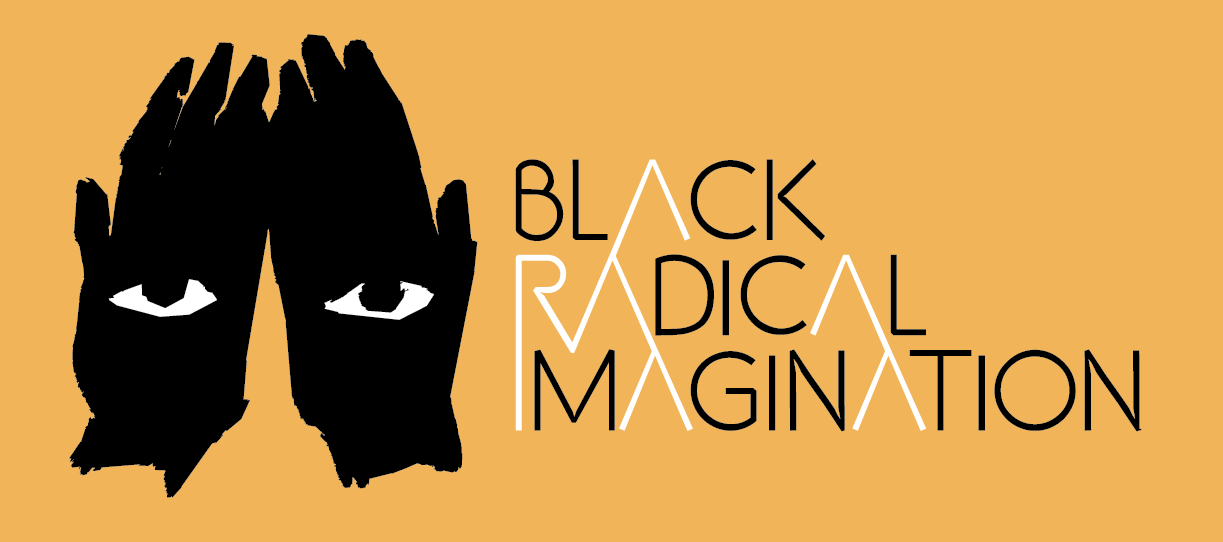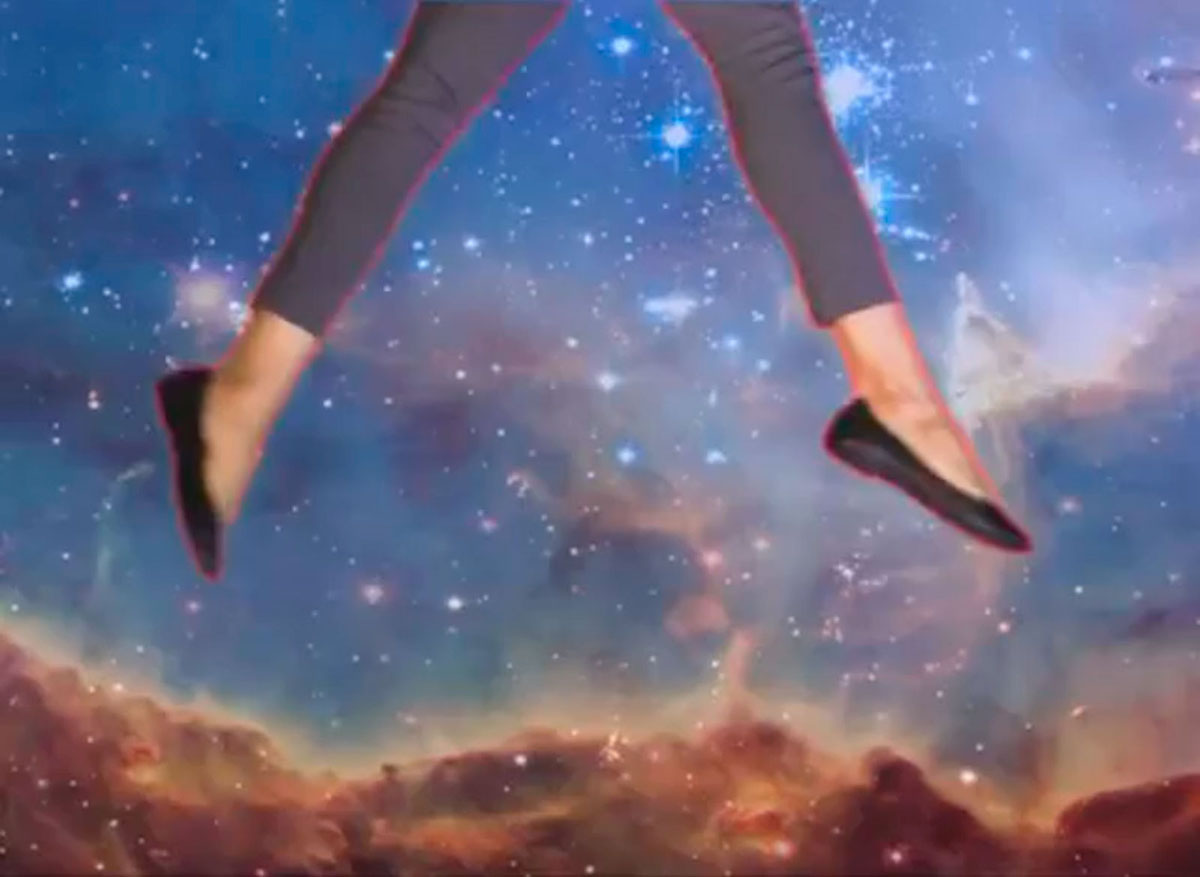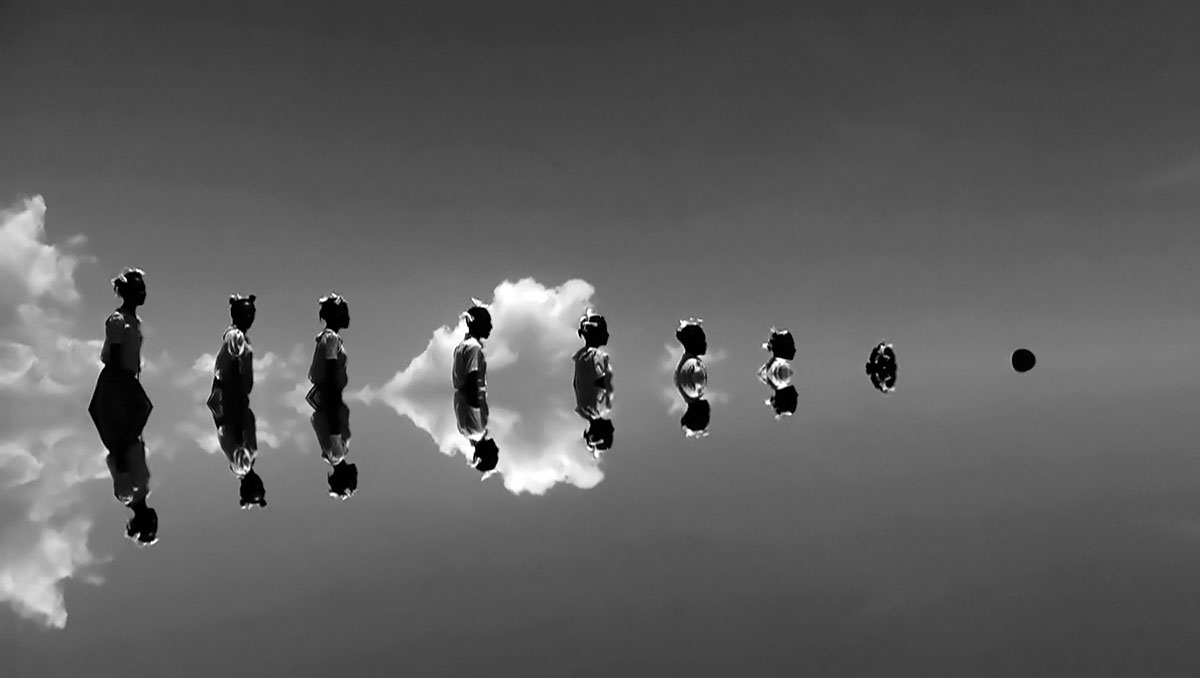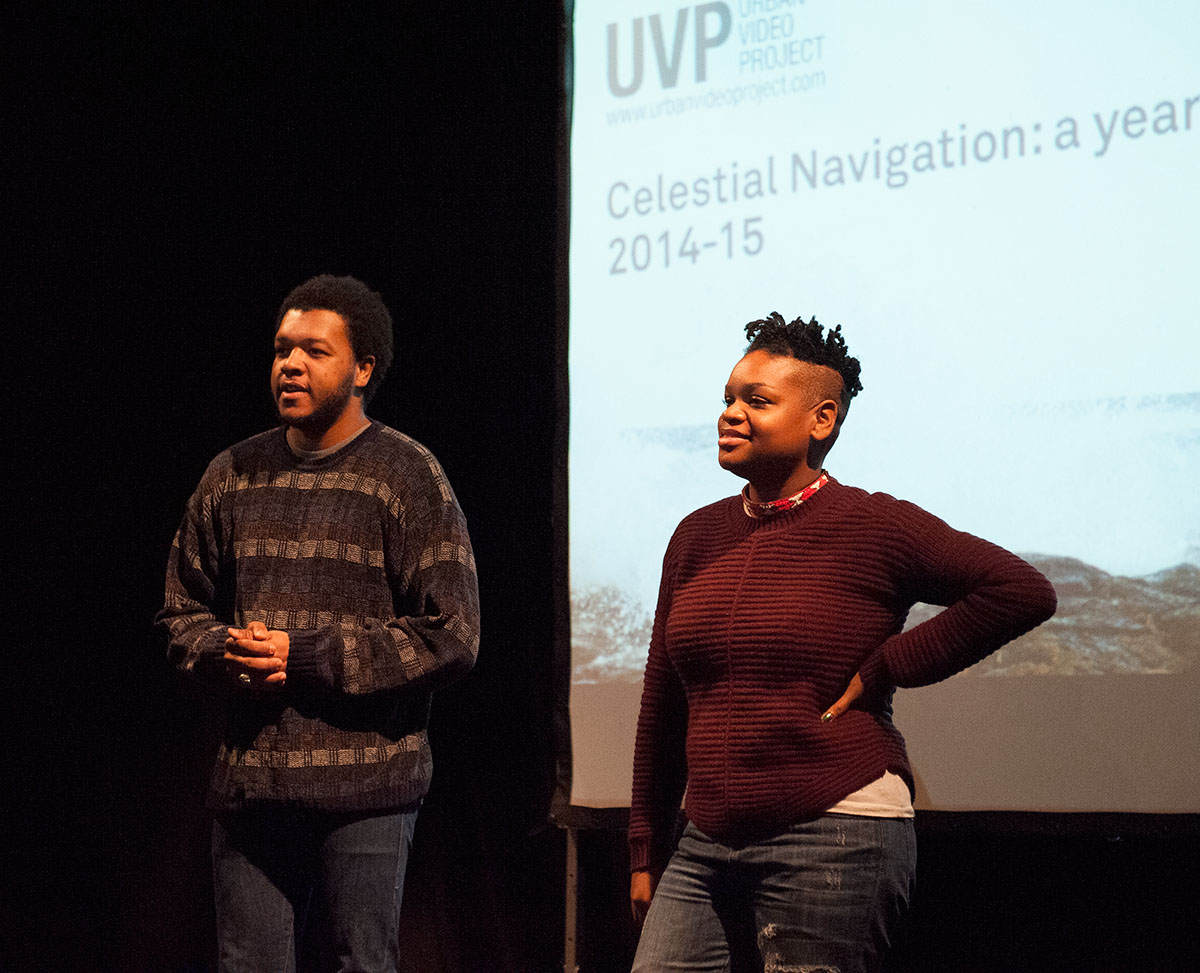Tag Archive for: Urban Video Project
Light Work is Hiring!
Associate Director (full-time)
/in NewsHoused in the Robert B. Menschel Media Center at Syracuse University, Light Work is one of the country’s most respected art institutions. Founded as an artist-run, non-profit organization in 1973, Light Work provides direct support through residencies, publications, exhibitions, a digital lab facility, and other related projects to emerging and under-represented artists working in photography and digital imaging.
Position: Associate Director (Full-time)
Qualifications BFA or MFA in Photography preferred.
Priority Deadline: The position will remain open until filled. We will give priority to applications received before February 28, 2022. — More Info
We are seeking a dynamic, highly qualified, experienced individual for the Associate Director’s position, and we strongly encourage applications from individuals of diverse cultural backgrounds. Reporting to the Director of Light Work, the Associate Director is a problem solver and creative thinker who is in tune with Light Work’s mission to support emerging and under-represented artists. The Associate Director is equal parts curator, organizer, and dot-connector. With the Director and Urban Video Project Program Director, the Associate Director rounds out the leadership team for Light Work. This individual is involved with decisions across all of Light Work’s programs with specific attention to relations with visiting artists, exhibition curation, and editing issues of Contact Sheet. They are central to the Artist-in-Residence selection process and Light Work Grants. They also take on day-to-day tasks and provide general support to Light Work’s Director. They will play a key role in advancing Light Work’s mission locally, nationally, and internationally.
—
Light Work is an equal opportunity employer. Upon request, both Light Work and Syracuse University will provide accommodation to applicants with disabilities throughout the recruitment, assessment, and selection process. Find more info at www.lightwork.org/opportunities
Job Description
- Responsibilities Curating two exhibitions per year and two exhibition catalogs (Contact Sheets). Write an introductory text for each publication.
- Coordinate the operations and hospitality of Light Work’s Artist-in-Residence program including, booking and scheduling. Provide additional assistance to artists traveling internationally.
- Editor of the Light Work Annual. Coordinate content from artists and authors. Liaison with designer, line editor, and staff in preparing the 140-page publication.
- Plan and participate in Art Fairs like the Armory Show, AIPAD or Photo Paris/New York.
- Organize Light Work Grant application and jury process
Syracuse University is an equal-opportunity, affirmative-action institution. The University prohibits discrimination and harassment based on race, color, creed, religion, sex, gender, national origin, citizenship, ethnicity, marital status, age, disability, sexual orientation, gender identity and gender expression, veteran status, or any other status protected by applicable law to the extent prohibited by law. This nondiscrimination policy covers admissions, employment, and access to and treatment in University programs, services, and activities. For a detailed position description and online application instructions, go to www.sujobopps.com (Job #037978). Cover letter and resume must be attached. Review of applications begins immediately and the search will remain open until the position is filled. Syracuse University is an AA/EOE.
Associate Director (full-time)
Urban Video Project: Excerpt from Tiffany E. Barber’s “Cyborg Grammar?”
/in News, Urban Video ProjectLight Work is pleased to present the second in a series of special posts from our affiliated program, Urban Video Project (UVP). UVP is a multi-media public art initiative of Light Work and Syracuse University, and an important international venue for the public presentation of video and electronic arts. Operating on the Connective Corridor cultural strip in Syracuse, NY, UVP’s flagship site UVP Everson features year-round, outdoor public projections onto the facade of the I.M. Pei designed Everson Museum of Art. UVP is one of few projects in the United States dedicated to continuous and ongoing video art projections. For more information about the Urban Video Project, please visit UVP’s website.
As the culminating event to its 2014-2015 curatorial program, Celestial Navigation: a year into the afro future, UVP will be presenting a full day of afro-future inspired and related events on April 7, 2015. These events include an artist lecture by Cauleen Smith; a workshop with Rasheeda Phillips; the Speculations performance, conversation, and screening; and the world premiere of Cauleen Smith: Crow Requiem. For more information, please visit urbanvideoproject.com.
Cauleen Smith: Crow Requiem will remain on view at UVP Everson from April 7 through May 30, 2015, screening every Thursday through Saturday from dusk until 11p.m.
Below, Tiffany E. Barber presents an excerpt from her unpublished essay, “Cyborg Grammar? Reading Wangechi Mutu’s Non je ne regrette rien through Kindred.” Barber’s essay will be included in the forthcoming book Afrofuturism 2.0: The Rise of Astroblackness, edited by Reynaldo Anderson and Charles Jones and published by Lexington Books.
Barber will be co-moderating the Speculations event with Jerome P. Dent and Anneka Herre at the Everson Museum of Art on April 7, 2015.
—
“A maimed figure – part human, part animal, part machine – is suspended in the middle of a grey and brown, cloud-like background. Severed from its upper half and projected into a cumulous abyss, only the lower limbs of the figure remain, separated like scissors. The bottom leg extends and the top leg bends at the knee, reaching upward like a scorpion’s tail or a morbidly elegant arabesque. Instead of a knee joint, the top leg is equipped with a motorcycle wheel that connects to spinal tubing. Green and grey-scaled tentacles cover its pelvic region. The right half of the picture plane is bisected by the figure’s bottom leg. Instead of a foot, the end of the leg is fitted with an amalgam of animal hoof, stiletto, and blooming flower. The left half of the picture plane is dominated by a coiling serpent whose skin is imbued with violet, red, and other earthen hues.[i]
The center of the image is the most visually arresting. Occupied by black root-like structures emerging from the figure’s lower excised torso, the grey background is spattered with colliding color fields of ochre, green, and pink spewing from the figure’s top leg from which its foot appears to have been violently amputated. The composition is arranged in such a way that it is hard to tell whether the coiling serpent is responsible for the figure’s ruptured state, or if the plant parts have caused the body to breach internally. The collage, Non je ne regrette rien (2007) by artist Wangechi Mutu, confronts the viewer with a complex scene that is repulsive yet seductively compelling, and the arrangement of human, animal, plant, and mechanical parts suggests a type of mutualism that results in a dismembered body. Known for her grotesque representations of black female bodies that exist between the cyborgian and the Afrofuturistic, Mutu’s Non je ne regrette rien offers a unique approach to black female subjecthood, what I call transgressive disfigurement.[ii] It pictures ways of being that are not predicated on wholeness but which instead incorporate alternate, at times violent or “undesirable” forms of transformation that serve to produce dismembered black female bodies.”
—
[i] Nicole R. Smith notes, “[M]uch of Mutu’s work[s] [. . .] often include a central female creature. Sometimes such figures are flanked by smaller and even more fantastical creatures—part fairy, puck, and insect. In some instances, they merely surround the main figure, while in others they take on a more sinister appearance, acting out in devilish ways” (Smith, “Wangechi Mutu: Feminist Collage and the Cyborg,” Art and Design Theses Paper 51 (2009), 13). A portion of the left side of the female figure in Non je ne regrette rien is flanked by a serpent. For the purposes of this essay, I focus on the central female figure in Non je ne regrette rien in order to underscore the intervention into representing black female bodies that my reading of Mutu’s collage makes.
[ii] A portion of this chapter was presented at the 35th Anniversary Conference of the Simone de Beauvoir Institute at Concordia University in April 2013 in Montréal, Québec. Special thanks to my colleague Rachel Zellars for the many conversations that helped me clarify this notion of “transgressive disfigurement.”
—
Image: Wangechi Mutu, Non je ne regrette rien, 2007. Ink, paint, mixed media, plant material and plastic pearls on Mylar, 54 x 87 inches. Courtesy of the Artist and Victoria Miro Gallery.
Tiffany E. Barber is a scholar, curator, and writer of twentieth and twenty-first century visual art and performance with a focus on artists of the black diaspora living and working in the United States. Her essay on artist Wangechi Mutu and Octavia Butler’s 1979 novel Kindred is forthcoming in Afrofuturism 2.0: The Rise of Astroblackness (Lexington Books).
Urban Video Project: Interview with Curators of Black Radical Imagination
/in Interviews, News, Urban Video ProjectLight Work is pleased to announce a series of special posts from our affiliated program, Urban Video Project (UVP). UVP is a multi-media public art initiative of Light Work and Syracuse University, and an important international venue for the public presentation of video and electronic arts. Operating on the Connective Corridor cultural strip in Syracuse, NY, UVP’s flagship site UVP Everson features year-round, outdoor public projections onto the facade of the I.M. Pei designed Everson Museum of Art. UVP is one of few projects in the United States dedicated to continuous and ongoing video art projections. For more information about the Urban Video Project, please visit UVP’s website.
As part of UVP’s 2014-2015 curatorial program, Celestial Navigation: a year into the afro future, UVP, parent organization Light Work, and the Community Folk Art Center recently hosted Black Radical Imagination I and II, a two-part screening of experimental short films and video works curated by Erin Christovale and Amir George. Inspired by the emergent discourses of Afrofuturism and Afrosurrealism, Erin and Amir have organized three programs of films by contemporary black filmmakers that represent a radical departure from mainstream cinema.
UVP’s current exhibition at UVP Everson, Jeannette Ehlers: Black Bullets, is one of many works included in the Black Radical Imagination (BRI) programs. Jeannette Ehlers: Black Bullets will remain on view at UVP Everson through March 28, 2015.
Tiffany E. Barber and Jerome P Dent, Jr. are scholars who engage with Afrofuturism and its critique. They conducted a brief interview with BRI curators Erin and Amir over email to learn more about their curatorial approach and future projects. Below is the interview transcript.
—
Tiffany E. Barber: How did Black Radical Imagination first come about?
Erin Christovale: Black Radical Imagination first came about when a mutual friend introduced Amir and I because we are both young, black film programmers in our respective cities, Los Angeles and Chicago. Being in this unique position, we started a conversation about our love for black independent cinema and emerging visual artists who use new media to create film and video works. At the time, we were also reading Freedom Dreams: Black Radical Imagination by Robin D.G. Kelley, which chronicles various liberation movements by black folk and suggests that without the concept of imagining a new future these historical movements would not have been possible. We wanted to apply that philosophy to the cinematic realm, in hopes of creating a new center of thought-provoking and experimental cinema outside of the larger entertainment industry that typically casts black characters as harsh stereotypes and takes ownership of their stories. From there, we created a program of seven short films that challenge normative ideas of blackness and that also celebrate the philosophy of Afrofuturism.

Black Radical Imagination logo

BRI II Screening at Community Folk Art Center
Jerome P Dent, Jr.: How do you two define Afrofuturism? It’s such a broad term now; how did it shape your first series, a celebration of the philosophy of Afrofuturism as you say, and open onto the second group of films you two curated – Black Radical Imagination II?
EC: Afrofuturism is a term first coined by Mark Dery and is essentially “recreating the past to imagine new futures.” In Black Radical Imagination, we adopt this term in a cinematic way, selecting shorts that defy a mundane or oppressive future by inserting black bodies in space, time travel, and new dimensions. I think the narratives presented in our first program really align themselves with the experimental nature of the program we wanted to highlight.

Still from Mae’s Journal by Amir George

Still from Black Bulletts by Jeannette Ehlers
JPD: The second iteration of BRI centers on Afrosurrealism and the third iteration is a move away from the thematic structure of the first two. Can you tell us how you two conceive of Afrosurrealism and about your approach to the current BRI program, which isn’t explicitly linked to terms like Afrofuturism and Afrosurrealism?
Amir George: Afrosurrealism is a term coined by D. Scot Miller, a writer based in the Bay area. It revolves around a mystical and spiritual context. Our approach to the current program expands on the reclamation of the black body.
EC: Yes, the term was inspired by Amiri Baraka who describes Henry Dumas’s stories as Afro-Surreal Expressionism. Baraka says, “Dumas’s power lay in his skill at creating an entirely different world organically connected to this one…they are also stories of real life, now or whenever, constructed in weirdness and poetry in which the contemporaneity of essential themes become clear.” In this spirit, the films we screened as part of BRI in 2014 program revel in the transfer of African spiritualities to the Americas and how that relation continues to shape our Diasporic culture.

Still from Moonrising by Sanford Biggers and Terrance Nance

Still from Field Notes by Vashti Harrison

Still from American Hunger by Ephraim Asili
TEB: You’ve said that BRI was inspired by Robin D.G. Kelley’s work, and UVP is hosting a panel discussion on Afrofuturism as a platform for social change in a few weeks. Given recent national protests – #BlackLivesMatter for instance – do you two consider BRI a way of life that has political implications now?
AG: I think BRI is more of a school of thought that has gathered audiences interested in discussing the themes being presented within the films. Our platform has given other voices the chance to be heard and allowed for open political conversations about the current state of things.
EC: In LA earlier this year, we were able to use our platform at the LA Book Fair to facilitate a conversation between Black Lives Matter and Printed Matter (the non-profit that hosts the book fair). With the films in the program as a backdrop, I think we continue a black radical tradition as artists and creatives who support larger direct action of community organizing.
TEB: What’s next for you two – individually and collectively?
AG: We have a new program that we’ll be screening throughout the year, and I’m working on a new short film.

Amir George and Erin Christovale at Community Folk Art Center for BRI II screening and panel

Black Radical Imagination Curators Amir George (left) and Erin Christovale (right) with featured artist Jeannette Ehlers (center) with UVP Everson projection of Ehlers’ Black Bullets.
—
Erin Cristovale is a curator based in Los Angeles focusing on film/video within the African Diaspora. She graduated with a B.A. from the USC School of Cinematic Arts and currently has an exhibition at the MoCADA Museum called a/wake in the water:Meditations on Disaster. She also works with a collective of creatives called Native Thinghood promoting emerging artists of color.
Amir George is a motion picture artist and film curator from Chicago. His video work and curated programs have been screened in festivals and galleries across the US, Canada, and Europe. In addition to founding The Cinema Culture, a grassroots film programming organization, Amir George was founding programmer of Black Cinema House, a residential cinema space on Chicago’s south side. He currently teaches and produces media with youth throughout Chicagoland.
Tiffany E. Barber is a scholar, curator, and writer of twentieth and twenty-first century visual art and performance with a focus on artists of the black diaspora living and working in the United States. Her essay on artist Wangechi Mutu and Octavia Butler’s 1979 novel Kindred is forthcoming in Afrofuturism 2.0: The Rise of Astroblackness (Lexington Books)
Jerome P Dent, Jr. is a graduate student at the University of Rochester whose work sits at the intersection of critical race theory, philosophy, and speculative fiction and film with a special focus on black imaginative labors.
Event photography by Matthew Pevear.
—
Barber and Dent will continue this series of afrofurist posts for Urban Video Project on the Light Work blog in coming weeks. Please stay tuned! Barber and Dent will also participate on the Speculations event panel on April 7 in celebration of the world premiere Cauleen Smith: Crow Requiem at UVP Everson. Join the event on Facebook.














